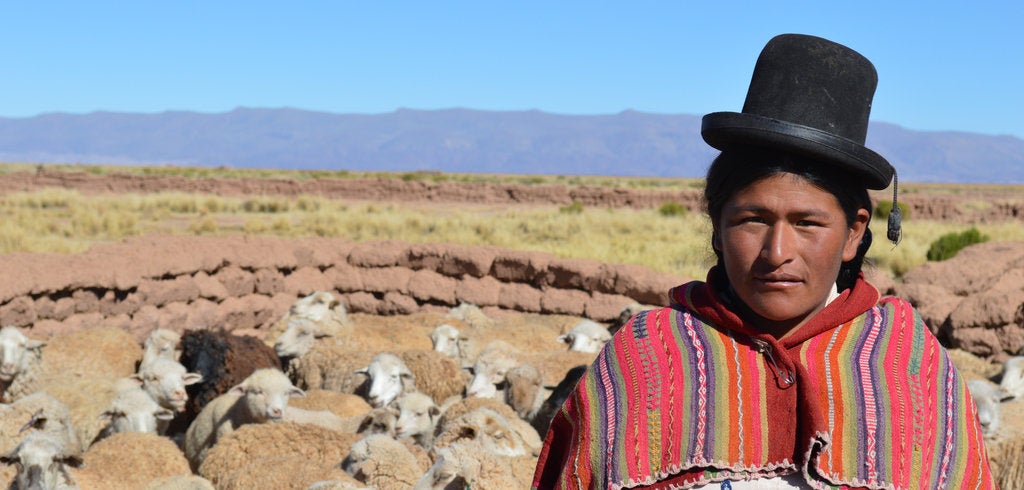Every year, the United Nations celebrate the International Day of the World’s Indigenous People on the 9th of August. This is not only an opportunity to take stock of the many challenges that development poses to indigenous people, but also of the ways that indigenous peoples themselves are challenging traditional development practices and promoting their own approaches.
The stakes are probably higher than ever. In Latin America, development projects, extractive industries, and the construction of mega-infrastructure such as dams and roads are increasingly affecting the lands, resources, and livelihoods of indigenous people living in remote areas. At the same time, the current political strength of many indigenous peoples and their shown ability to delay or stop projects they disagree with[1] has meant that developers now need to take the needs of local communities into consideration.
Safeguard policies and corporate social and environmental responsibility practices have been developed as a response to the interests and pressures of indigenous communities. These policies and practices focus on issues such as mitigating and compensating for negative impacts, generating benefits for local populations, and developing extensive processes of consultation and participation.
These certainly are important advances in comparison to earlier models of development. However, the challenges that indigenous people have raised to certain development practice do not end here. Indigenous people’s own worldviews and strategies to promote their collective wellbeing continue to be rarely taken into account. This is a key reason why tensions persist in the implementation of many development projects in indigenous territories, and why the potential benefits of development have not yet reached indigenous communities in optimal ways.
In reality, although their end goals may be different from our own notions of development, indigenous people’s lives may also benefit from increased economic opportunities, infrastructure that provides access to better social services, sustainable uses of natural resources, and other positive impacts that development projects can deliver. The next big challenge for development practitioners then is to establish a middle ground between their own modern approaches to development and indigenous peoples’ views and aspirations.
Andean indigenous worldviews offer an example of possible ways ahead. Community strategies to promote their collective wellbeing are centered on values such as reciprocity, equity, consensus building, and solidarity across generations. They place value on the community’s ability to define its own fate. Andean people think of the Pachamama (Mother Earth) as a living being that is connected to the human world through a single system based on interdependent relationships. These views are condensed in the notion of Vivir Bien (or Living Well). In this context, a culturally acceptable approach to development would include ways to maintain a balance with the living beings of nature, generate benefits that are collective rather than individual, give decision-making power to local communities, and establish long-term and reciprocal relations between communities and project developers.
The Bolivian government has recently codified these indigenous worldviews into its Constitution. In 2012, it passed the Ley Marco de la Madre Tierra y Desarrollo Integral para Vivir Bien.[2] This law conceives of Mother Earth as a political actor with specific rights. Such rights are based on the principle of striking a balance between the needs for development and the “regenerating capacity” of nature. The challenge for the Bolivian government and its international partners is to now translate these principles into practice.
This example shows that moving towards a middle ground is possible. There are parallels between indigenous worldviews and current approaches to development, environmental protection, and their associated safeguard policies. For example, the Andean notion that Mother Earth consists of interdependent components whose renewal needs to be guaranteed is in line with our approach to integrated ecosystems that need to be protected.
There are no ready-made solutions. Achieving such a middle ground is no small challenge given the wide variety of indigenous cultures, worldviews, and strategies. Thus, middle grounds will have to be negotiated multiple times with different groups. However, if we want to increase the relevance of development to indigenous peoples and gain their acceptance for interventions in their territories, this challenge of accounting for their worldviews and strategies in development practice needs to be met head-on. As social scientist Eduardo Gudynas put it, within the Vivir Bien approach, “bridges and roads will have to be built, but they will have different designs, will be located in different sites and serve different purposes than their current ones.”
[1] There are numerous examples. Among the most well-known are the Belo Monte dam in Brazil, which has been delayed by over two decades, the road through the TIPNIS indigenous territory in Bolivia, and the Santa Ana mining project in Andean Peru.
[2] Framework Law of the Mother Earth and Integral Development towards the Good Life (law 300).


Leave a Reply